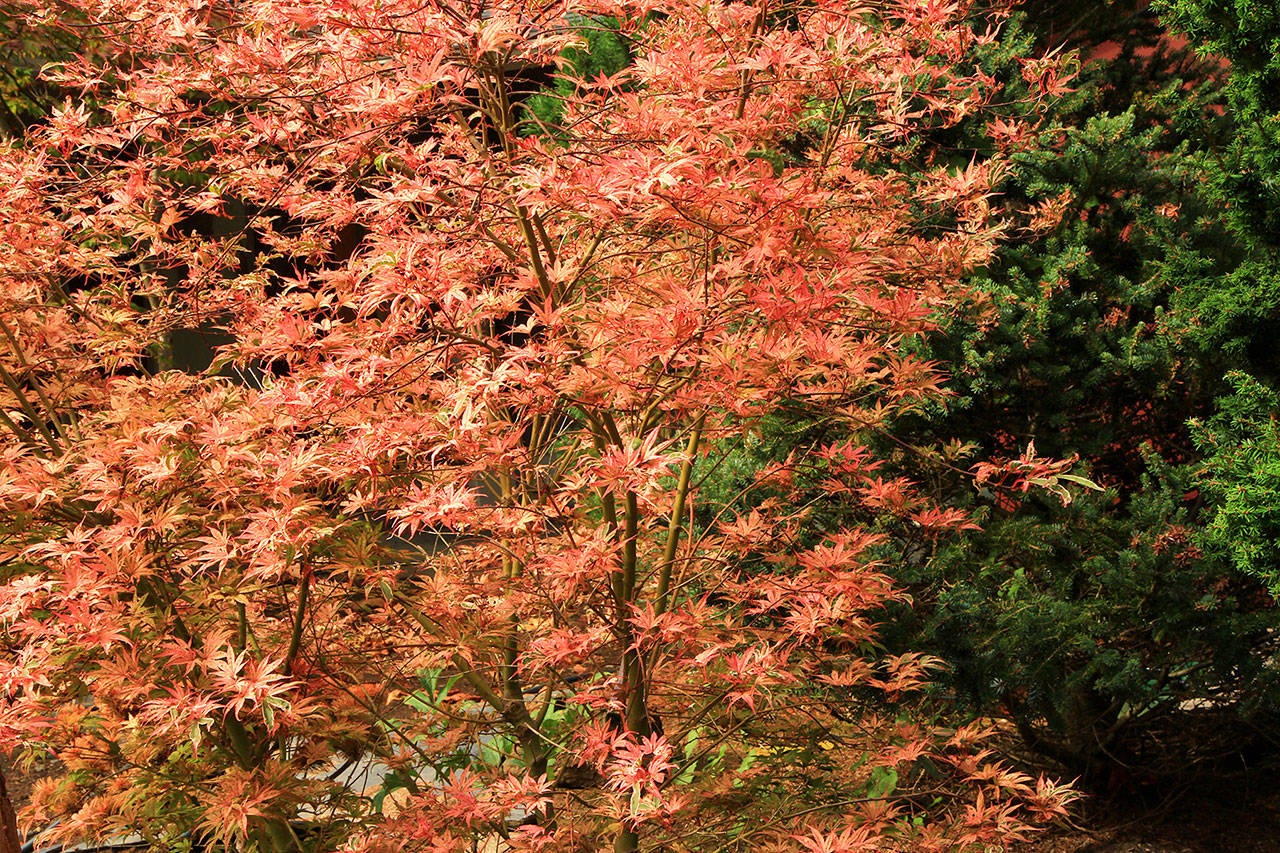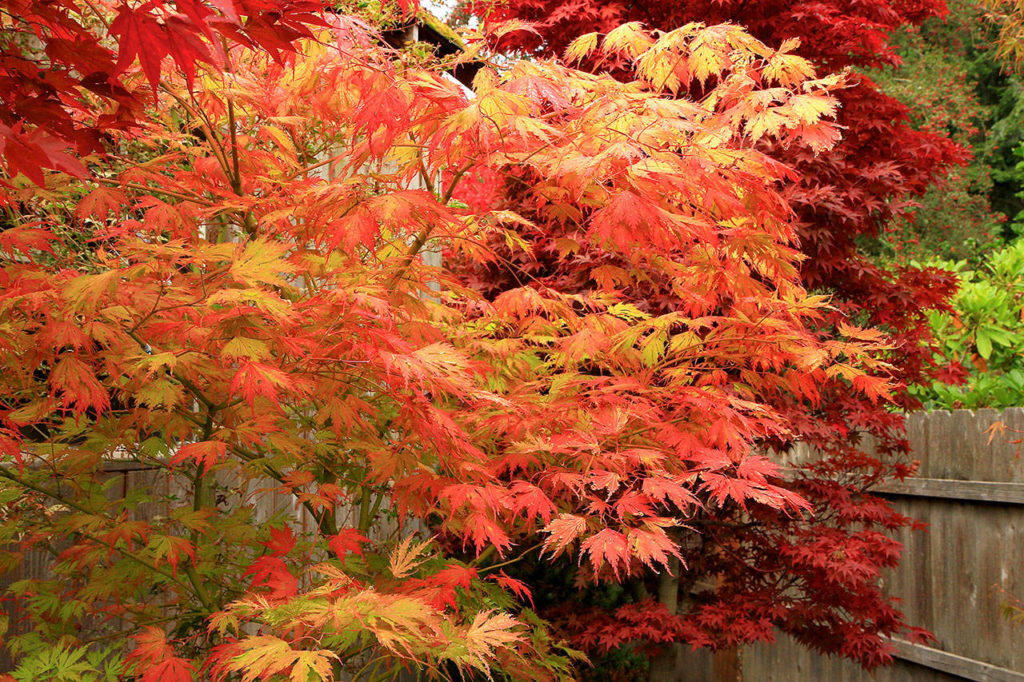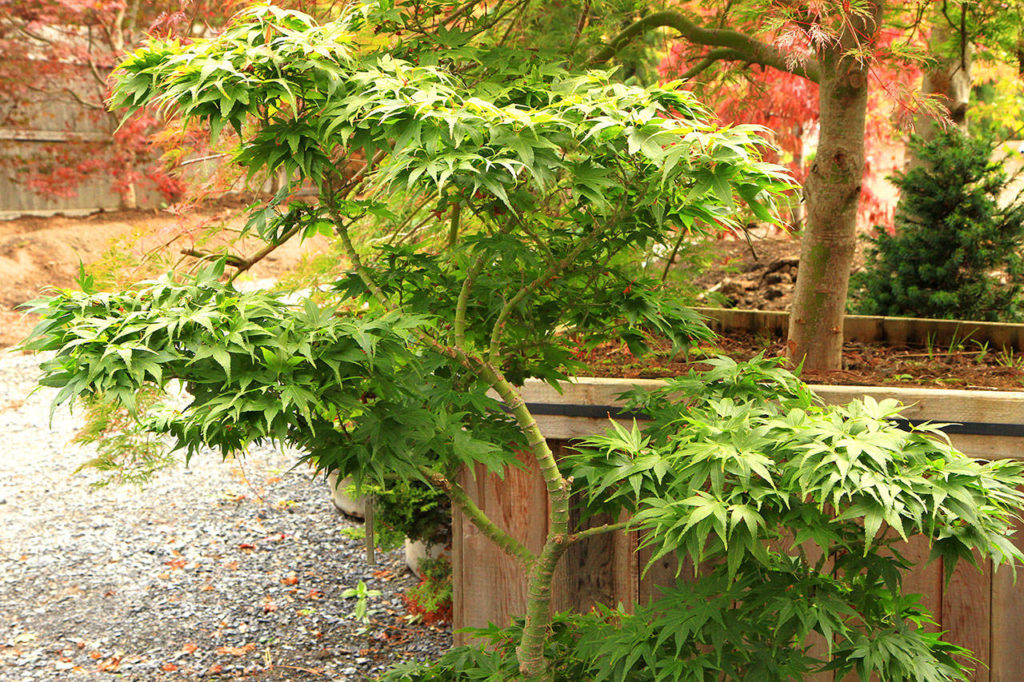Who doesn’t love Japanese maples? A stroll through a garden featuring Japanese maples offers a sensory delight at any time of the year.
In spring, new growth emerges in colors ranging from lime greens, soft golds and pink and red variegation. During summer months, these trees can become a centerpiece in the yard, or lend a peaceful, calming presence to an outdoor space.
As autumn approaches, many Japanese maples put on a fiery display of brilliant colors of reds, oranges and golds. There are hundred of varieties of Japanese maples, ranging in sizes from 3 feet tall to 30 feet tall.
Many of the dwarf Japanese maples are ideal for the smaller garden or courtyard, where a large tree would completely overwhelm the space. The dwarf maples also can be planted in a sizable container to add a focal point to an entryway or serve as a backdrop to a patio. Select varieties are based on foliage color, shape of plant, the overall effect and the amount of sunlight needed.
A spectacular maple that adds eye catching color to a small space from spring through fall is the variety “Geisha Gone Wild.” In spring, leaves explode in hues of pinks and light purples, certain to announce the promise of warmer days on the horizon. During summer, the leaves transform into pleasing variegation of light green and white.
As autumn arrives, the leaves take on a mixture of purples, oranges and pink colors, completing the three-season show. “Geisha Gone Wild” grows slowly, to a height of around 6 feet tall by 3 feet wide in 10 years, possibly topping out at 8 feet tall at maturity. This vase-shaped maple prefers morning sun and afternoon shade.
A great dwarf maple to feature in a container is “Lemon Lime Lace.” This compact mini tree will get all of 2 feet tall in 10 years. The deeply dissected leaves emerge a very light lemon-yellow, becoming lime green during the summer months with a remarkable two-tone effect. In fall the lime green is replaced by bright oranges and yellows. The overall shape of this plant is of an irregular mound, eventually reaching a width of around 4 feet.
One of my favorite dwarf Japanese maples is the variety “Ruby Stars.” I was totally smitten by the deep-red color in spring and its tiny star-shaped leaves. A slow grower, “Ruby Stars” currently resides in a container at the entry to my office. As spring gives way to summer, the leaves fade to a reddish green mix with an interesting crinkle to the leaf edges. Autumn brings brilliant yellows and golds, adding to the red color. Although “ Ruby Stars” will take full sun, it prefers filtered shade. This would be the perfect tree to plant in a fairy garden.
Add a stately presence to any landscape with the Japanese maple “Mikawa Yatsubusa.” The overall shape of the branching of this tree features a pronounced sculptural structure with dense foliage. The medium-green leaves overlap each other in multiple layers, creating a unique effect. Season-long color is provided by the light green spring new growth and electric fall colors of golden orange with red tips.
This intriguing maple makes a strong focal point in the garden. Situate it next to a boulder and under plant with a grouping of small ornamental sedges. Place a stone bench nearby, where you can sit and watch the leaves move in a summer breeze. “Mikawa Yatsubusa” will thrive in a cool location with moist, well-drained soil. It’s a great choice for a woodland garden. Give it room to grow to its long-term width of 6 feet.
While photographing maples for this column, I came across a specimen of “Sister Ghost.” With its 10-year height of 8 to 9 feet, it needs a larger space than some of the maples listed above. Its cousin, Acer palmatum “First Ghost,” has a more compact growth habit for a smaller area, reaching just 4 to 7 feet tall. The deeply divided leaves are heavily serrated, with impressive veinations of darker green over a contrasting cream-colored background. A riot of orange and red leaves put on quite a display in fall months.
This is just an introduction to the many dwarf varieties to choose from. More options such as “Fairy Hair,” “Kamagata,” “Aramata” and “Sharp’s Pygmy,” to name a few, are other great maples for small spaces.
Select a maple variety that will do well in the conditions you hope to plant in. While some of these dwarfs will tolerate full sun, they will not do well placed against a southwest-facing wall that reflects heat. Many of these prefer part sun or filtered shade. All of the maples above need good drainage. Maples planted in containers will do best if given regular water — monitor them so they don’t dry out or seem too moist.
Pam Roy of Planscapes is an award-winning landscape designer with over 35 years of experience. Contact her by email via info@planscapesdesign.com or by calling 425-238-4678. Visit www.planscapesdesign.com for more information.
Talk to us
> Give us your news tips.
> Send us a letter to the editor.
> More Herald contact information.



























